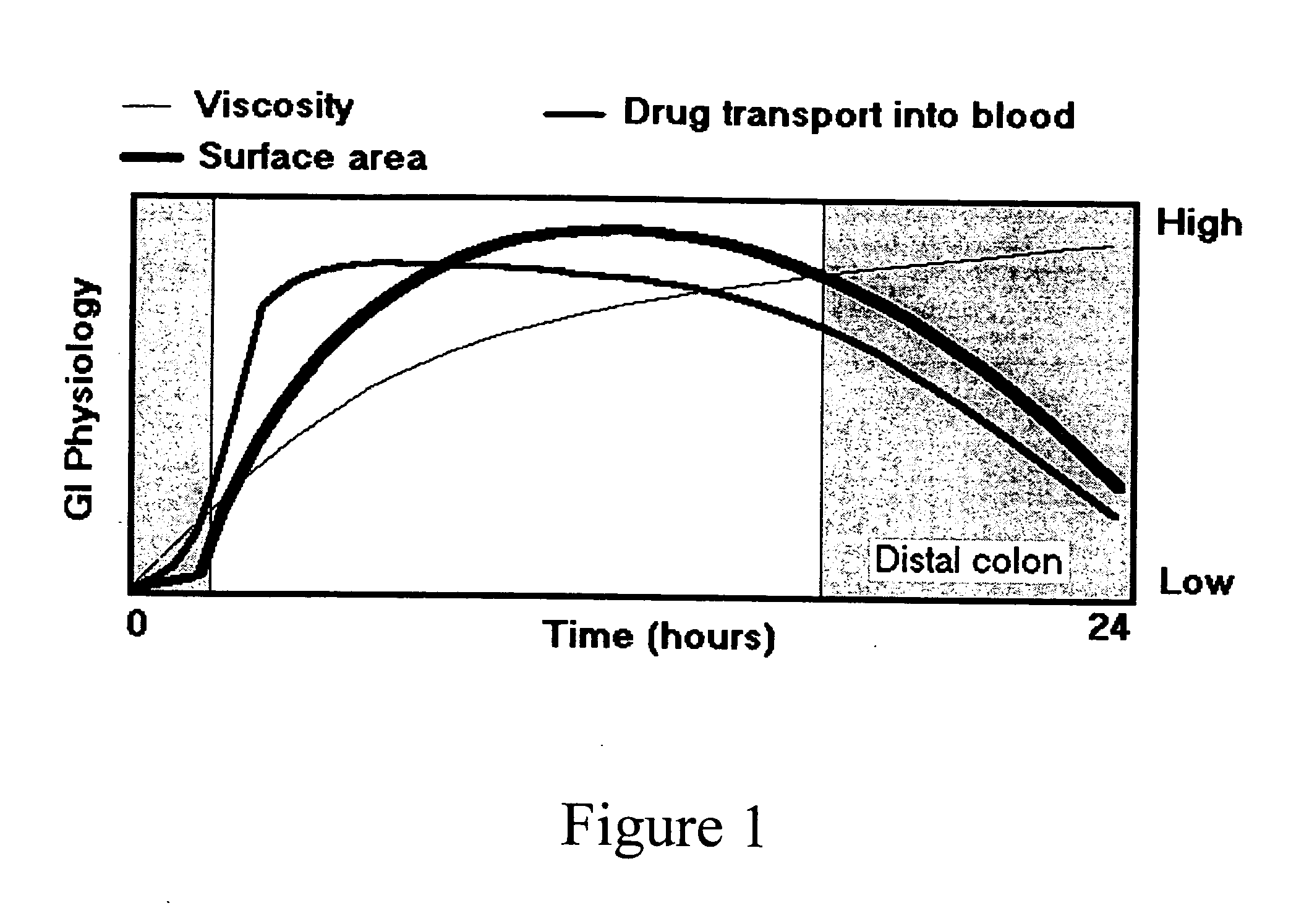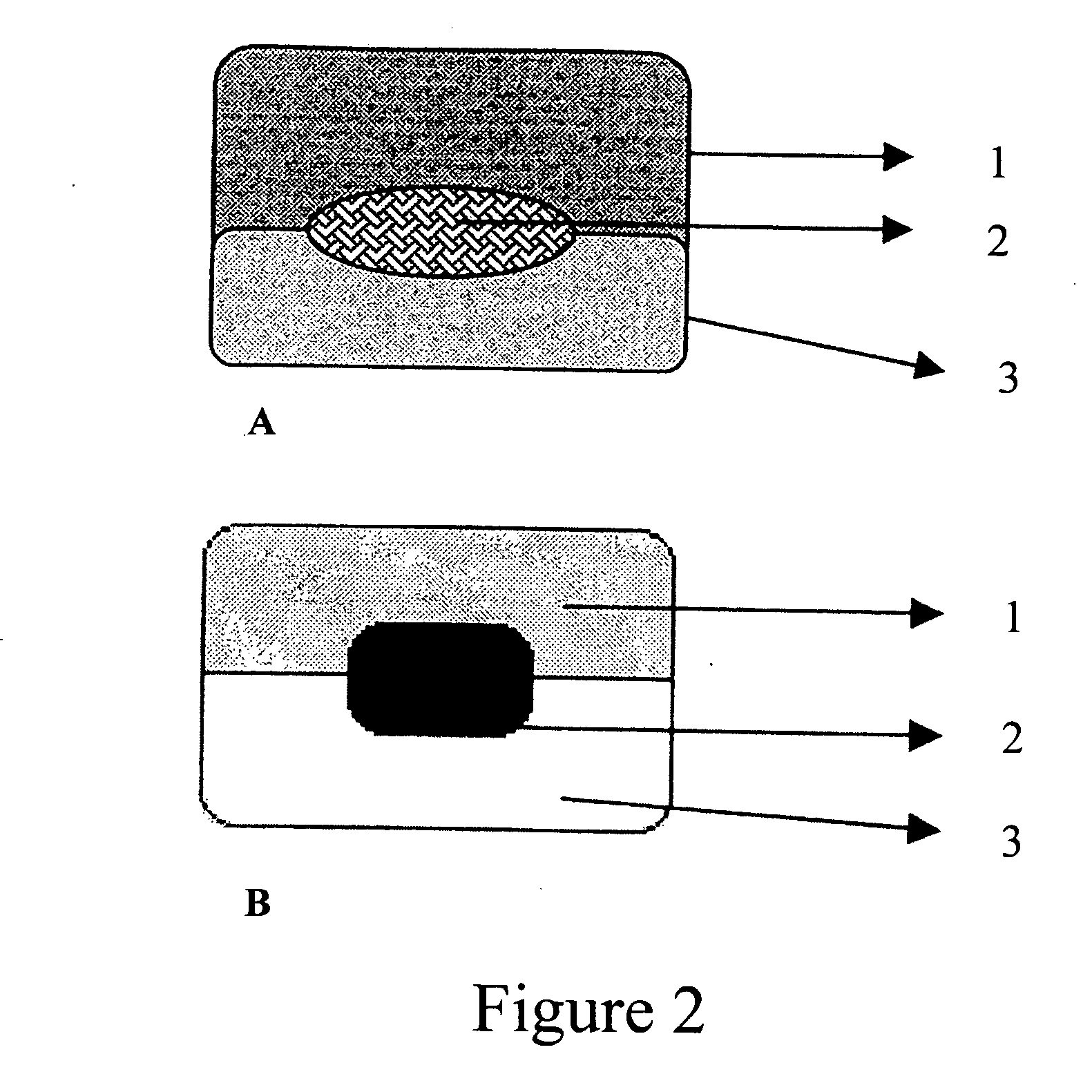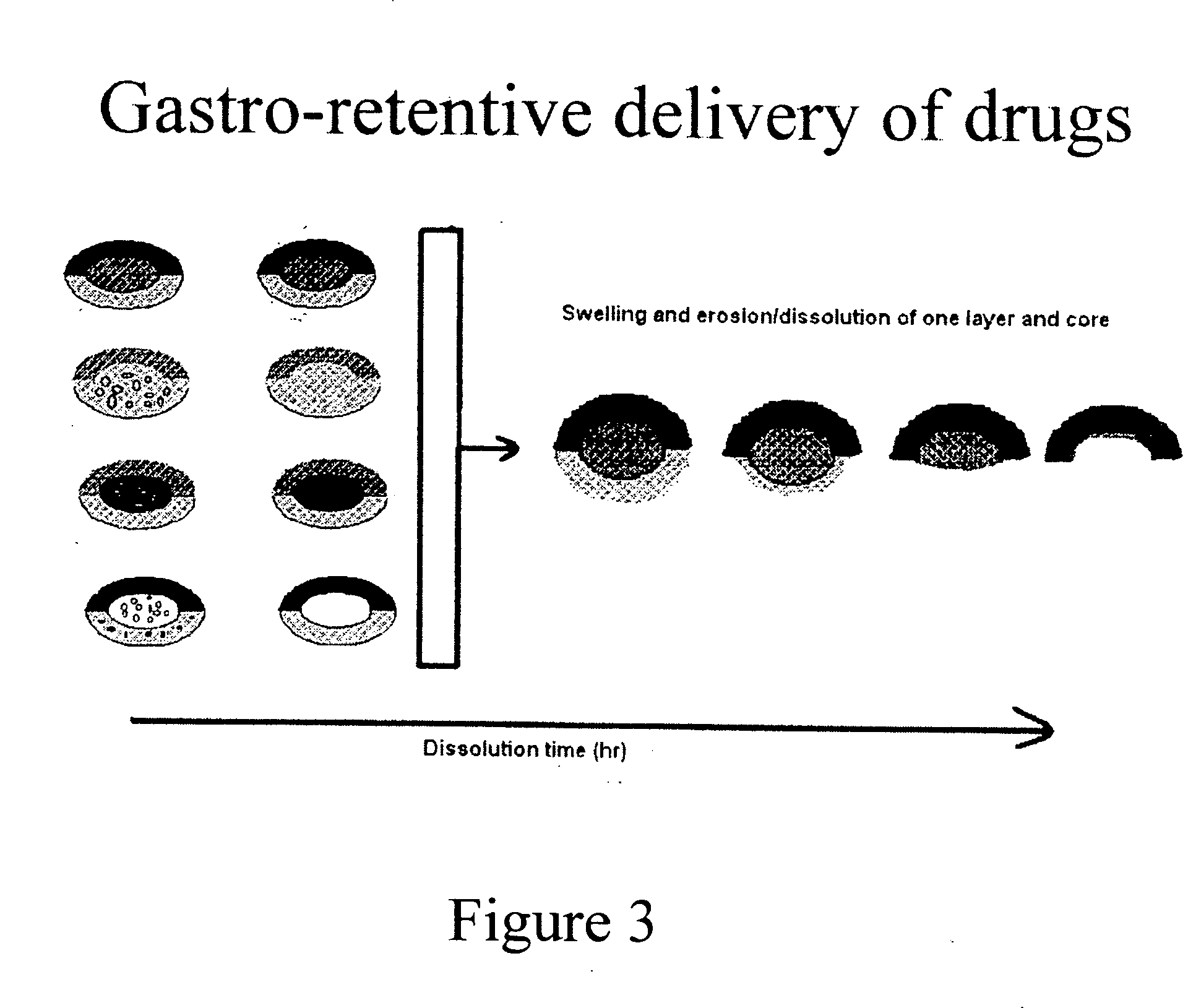Compressed composite delivery system for release-rate modulation of bioactives
a bioactive and release-rate-modulating technology, applied in the field of compressed composite delivery system, can solve the problems of gastrointestinal absorption still being a challenge, and the profile of zero order release alone or combined with initial rapid drug release is not necessarily the most favorable for rate-controlled delivery of a drug regimen
- Summary
- Abstract
- Description
- Claims
- Application Information
AI Technical Summary
Benefits of technology
Problems solved by technology
Method used
Image
Examples
example 1
[0048]
Quantity (mg)IngredientsControlInventionCore (Disk-Compressed Thin Slab):Theophylline100100Zone A:PEO, 1 × 106 MW7575Sodium Deoxycholate—12.5Adipic Acid—12.5Zone B:PEO, 1 × 106 MW7575Sodium Deoxycholate—25
[0049] Dissolution studies were conducted with USP 23 Rotating Paddle Method (Apparatus 2), 50 rpm, buffer medium pH 1.5, 37° C. FIG. 4a shows the release profile of theophylline in buffer medium from the core, which contains no polymer, but is surrounded by two outer zones comprising polyethylene oxide (PEO) 1×106 MW matrices. Solid circles represent the control and open circles represent the delivery system of the invention. The control does not include adipic acid or sodium deoxycholate. After an initial, brief lag time, theophylline release from the delivery system of the invention is linear over 24 h. In contrast, after a brief lag time, theophylline is rapidly released from the control between 3 h and 12 h.
example 2
[0050]
Quantity (mg)IngredientsControlInventionCore (Disk-Compressed Thin Slab):Diltiazem Hydrochloride100100Zone A:PEO, 7 × 106 MW200200Sodium Deoxycholate—12.5Adipic Acid—12.5Zone B:PEO, 7 × 106 MW200200Sodium Deoxycholate—25
[0051] Dissolution studies were conducted with USP 23 Rotating Paddle Method (Apparatus 2), 50 rpm, buffer medium pH 1.5, 37° C. FIG. 4b shows the release profile of diltiazem hydrochloride from the core which is surrounded by two outer zones comprising PEO 7×106 MW matrices. Solid circles represent the control, and open circles represent the delivery system of the invention. In Example 2, both the size and amount of polymer (PEO) is increased (compared with Example 1) in the control and the delivery system, but electrolytes are not present in the control. Diltiazem release from both the control and the delivery system follows zero-order kinetics.
example 3
[0052]
IngredientsQuantity (mg)Core:PEO, 1 × 106 MW100Diltiazem Hydrochloride100Sodium Carbonate100Zone A:PEO, 600 000 MW200Zone B:PEO, 600 000 MW150Diltiazem Hydrochloride50
[0053] Dissolution studies were conducted with USP 23 Rotating Paddle Method (Apparatus 2), 50 rpm, buffer medium pH 1.5, 37° C. FIG. 4c shows the release profiles of diltiazem hydrochloride from a delivery system of the invention that comprises a lower MW polymer (PEO) in the two outer zones than in the core, and each outer zone has a different concentration of polymer than the other. In Example 3, the lag time prior to release is increased to approximately 6 h, and thereafter, release of diltiazem from the delivery system follows zero order kinetics.
PUM
 Login to View More
Login to View More Abstract
Description
Claims
Application Information
 Login to View More
Login to View More - R&D
- Intellectual Property
- Life Sciences
- Materials
- Tech Scout
- Unparalleled Data Quality
- Higher Quality Content
- 60% Fewer Hallucinations
Browse by: Latest US Patents, China's latest patents, Technical Efficacy Thesaurus, Application Domain, Technology Topic, Popular Technical Reports.
© 2025 PatSnap. All rights reserved.Legal|Privacy policy|Modern Slavery Act Transparency Statement|Sitemap|About US| Contact US: help@patsnap.com



